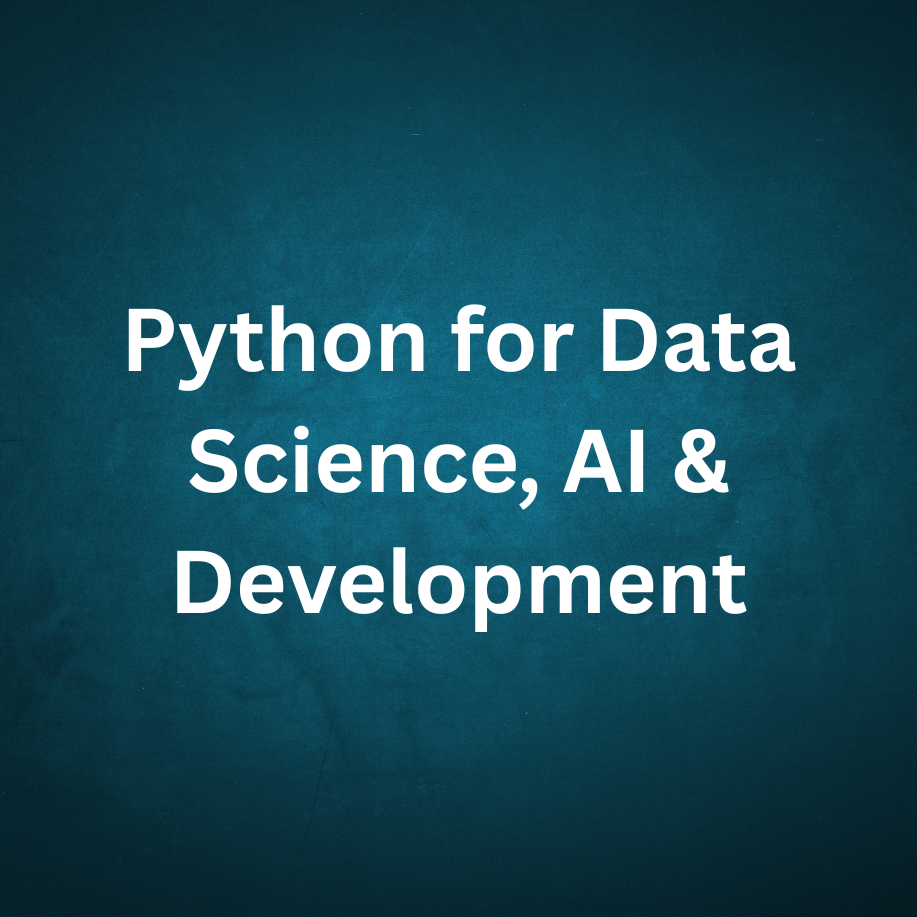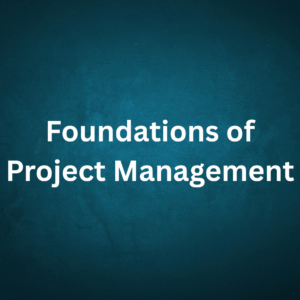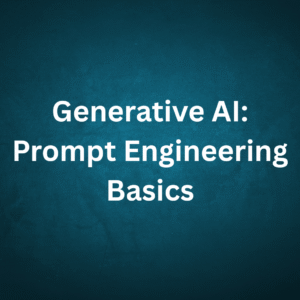Description
Here’s a comprehensive curriculum for a course titled:
🐍 Python for Data Science, AI & Development
🎯 Course Objective:
To equip learners with the foundational and practical knowledge of Python for use in data science, machine learning, AI, and application development.
🕒 Duration:
8 to 12 weeks (adjustable for university courses, bootcamps, or corporate training)
🎓 Target Audience:
- Beginners in programming
- Aspiring data scientists and AI developers
- Engineers or analysts transitioning to data/AI roles
🔑 Prerequisites:
- Basic computer literacy
- No prior coding experience required (ideal for beginners)
🗂️ Course Modules Overview
Module 1: Introduction to Python
- Why Python for Data Science and AI?
- Installing Python & using Jupyter Notebooks
- Python syntax, variables, and data types
- Control structures: if, loops
- Functions and basic error handling
Lab: Write your first Python scripts in Jupyter
Module 2: Working with Data in Python
- Lists, tuples, dictionaries, and sets
- File I/O (read/write CSV, TXT)
- Introduction to libraries:
NumPy,Pandas - DataFrame operations: filtering, sorting, grouping
Lab: Load and clean a real-world dataset (e.g. Titanic or Iris dataset)
Module 3: Data Visualization
- Why visualization matters
- Plotting with
MatplotlibandSeaborn - Line plots, histograms, bar charts, box plots, heatmaps
- Styling and customizing plots
Lab: Visualize insights from a cleaned dataset
Module 4: Python for Statistical Analysis
- Descriptive statistics (mean, median, std deviation)
- Probability basics
- Distributions (normal, binomial)
- Hypothesis testing (t-test, chi-square)
Lab: Analyze data using Python’s SciPy and Statsmodels
Module 5: Introduction to Machine Learning with Python
- Overview of machine learning
- Supervised vs unsupervised learning
- Using
scikit-learn- Linear regression
- Classification (k-NN, Decision Trees)
- Model evaluation (accuracy, confusion matrix)
Lab: Build a simple model to predict housing prices or loan approval
Module 6: Introduction to AI Concepts
- What is AI? Relationship with ML and DL
- Rule-based AI vs learning-based AI
- Overview of neural networks
- Intro to
TensorFloworPyTorch(high-level)
Lab: Build a simple neural network to classify images (e.g. MNIST)
Module 7: Python for Application & Web Development (Optional)
- Using Python in full-stack apps
- Basics of Flask for web APIs
- Calling AI/ML models in Flask apps
Lab: Deploy a simple ML model as a web service
Module 8: Working with APIs & Automation
- What are APIs?
- Consuming REST APIs with Python (
requests) - Automating data tasks with scripts
- Basics of data pipelines
Lab: Pull data from an external API (e.g., weather or Twitter API) and analyze it
Module 9: Project Week
- Final capstone project ideas:
- Data dashboard (with
Plotly/Dash) - Predictive model (housing, health, finance)
- AI-powered chatbot
- Automation tool using Python scripts
- Data dashboard (with
Deliverables: Presentation + source code + Jupyter Notebook
📚 Tools & Platforms Used
- Python (latest version)
- Jupyter Notebooks
- Anaconda or Google Colab
NumPy,Pandas,Matplotlib,Seabornscikit-learn,TensorFlow/PyTorch(intro level)- Flask (optional for dev)
- Git/GitHub for version control
🧪 Assessment & Evaluation
- Weekly quizzes
- Hands-on labs and assignments
- Mid-course practical test
- Final capstone project (graded)
📖 Suggested Readings & Resources
- Python for Data Analysis – Wes McKinney
- Hands-On Machine Learning with Scikit-Learn, Keras & TensorFlow – Aurélien Géron
- Kaggle Notebooks & Competitions
- IBM’s “Python for Data Science” (Coursera or edX)





Reviews
There are no reviews yet.